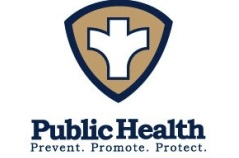Middle-Brook Regional
Health Commission
“Healthy People and Places – A Healthy Community”
Serving Green Brook, Warren, Watchung and Bridgewater
“Healthy People and Places – A Healthy Community”
Serving Green Brook, Warren, Watchung and Bridgewater
Maintaining good sleep habits is part of having a healthy lifestyle. Physical activity during the day and spending time outdoors can help prepare the body for sleep at night. Limit large meals, caffeine and alcohol to daytime hours. Before you retire for the night, take a bath, read a book, or spray the calming scent of lavender around your room. Keep your bedroom dark, quiet, cool and relaxing, free from electronic devices such as TVs, computers, tablets and smart phones. Most importantly, establish a regular sleep routine, which means going to bed and waking up at the same time every day, even on weekends.
The amount of sleep that you need is dependent on your age. Children need more than adults, as their brains and bodies are growing and developing. Newborns require 14-17 hours per day, infants 12-16 hours, toddlers 11-14 hours, preschoolers 10-13 hours, school age children 9-12 hours and teenagers 8-10 hours. Adults ages 18-65 and older should get 7-9 hours of sleep per night.
If you follow the above recommendations and still do not feel rested in the morning or have trouble sleeping through the night, you may have a sleep disorder. The best thing to do is to keep a sleep diary for ten days noting when you go to bed, fall asleep, wake up, get out of bed, take naps, exercise, and drink alcoholic and caffeinated beverages, and then go over it with your doctor.
Aside from feeling tired and sluggish, insufficient sleep can contribute to a number of chronic diseases and conditions such as diabetes, cardiovascular disease, obesity and depression. Lack of sleep can affect levels of Hemoglobin A1c, which is what controls the sugar in your body. People with sleep apnea have a greater chance of developing hypertension, stroke, coronary heart disease and irregular heartbeats than those without.
For more information, visit cdc.gov and psychologytoday.com.
